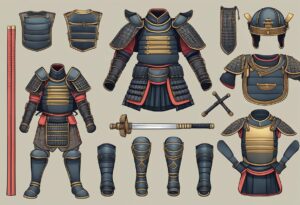Funerals are somber occasions all over the world, and people tend to dress conservatively to show respect for the deceased.
In Japan, however, there are a few more things to keep in mind when choosing what to wear.
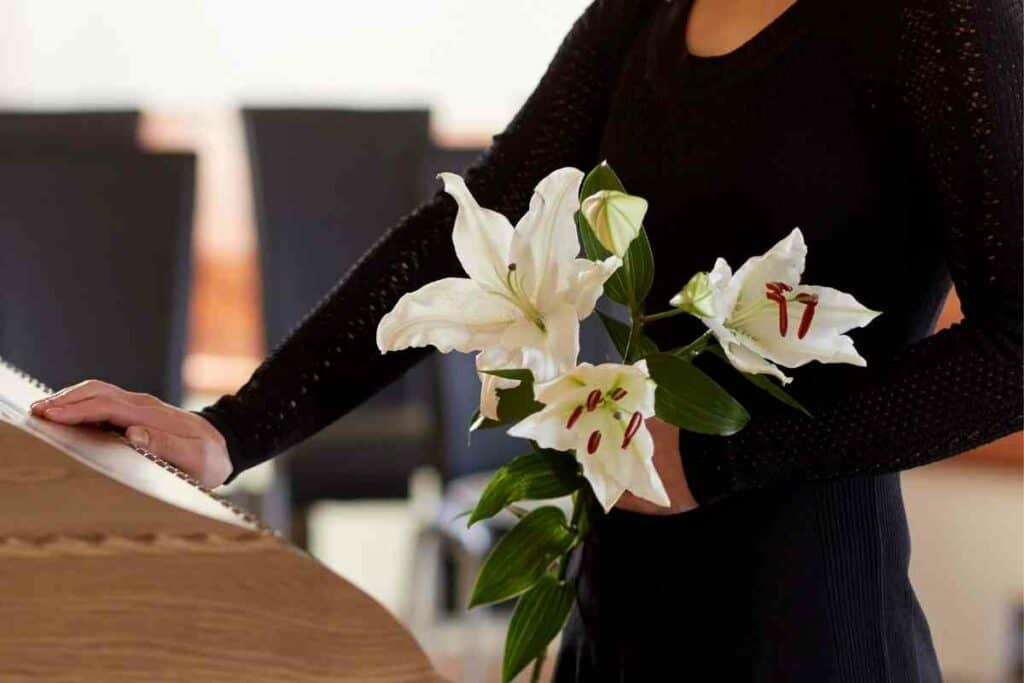
Here is a guide to help you choose appropriate clothing for a Japanese funeral.
Table of Contents
How You Hear About the Funeral
Nobody likes hearing the news that someone they know has died, and talking about it and bringing it up with every relative and friend can be even more difficult.
This is why when the funeral arrangements are made, a fuhou, or the equivalent of an obituary notice, is sent out to everyone invited to the funeral.
This fuhou will tell you the type of service you are invited to since there are a couple.
Wake
The wake, or tsuya, is a ritual that is typically held the night before the funeral.
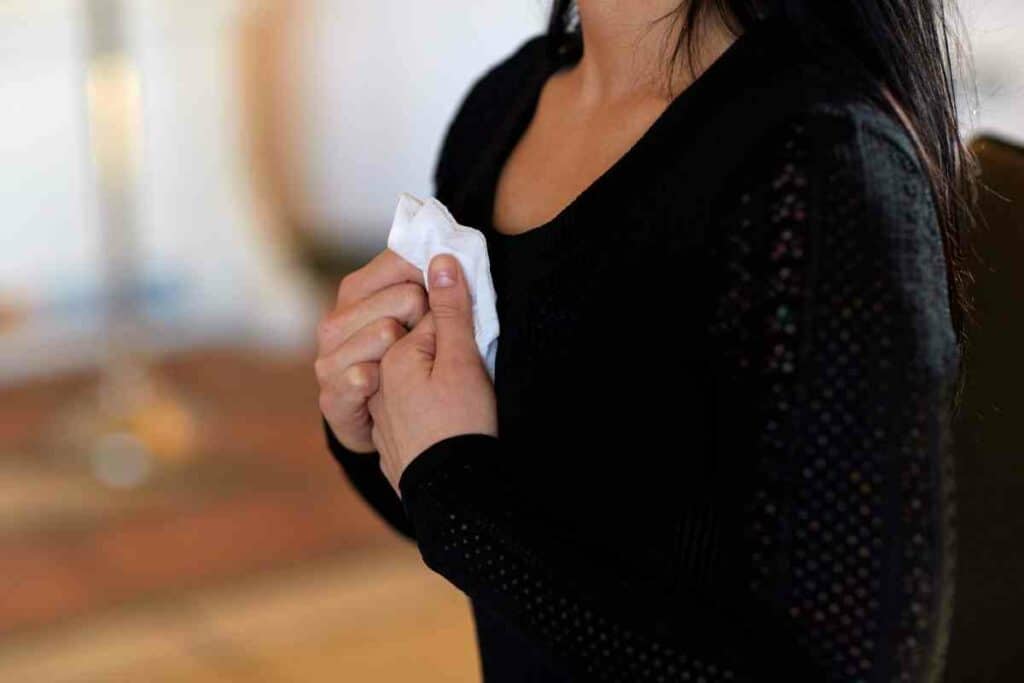
It is a gathering for the closest relatives and friends to have a small, intimate gathering to say goodbye.
A traditional tsuya is meant to be all through the night so that incense and candles can be kept burning.
Recently – These wakes are being shortened to hantsuya or half-wakes, which only last for a few hours so everyone can go home, get some sleep, and be present for the funeral the next day.
Funeral
The funeral, or sougi, is a larger gathering.

This is held at a funeral hall and usually adheres to religious policies, whether they are Buddhist, Shinto, or Christian.
Farewell Service
The kokubetsushiki or farewell service can either be held immediately after the funeral, or the family might choose to have a farewell party at a different location, or on a different day.
This service used to be open for any mourners who wished to say farewell to the departed.
And the funeral was limited to family and close friends, but now they are practically synonymous with each other.
What to wear
When attending a funeral in Japan, it is important to dress conservatively.
This means avoiding bright colors, patterns, and logos.
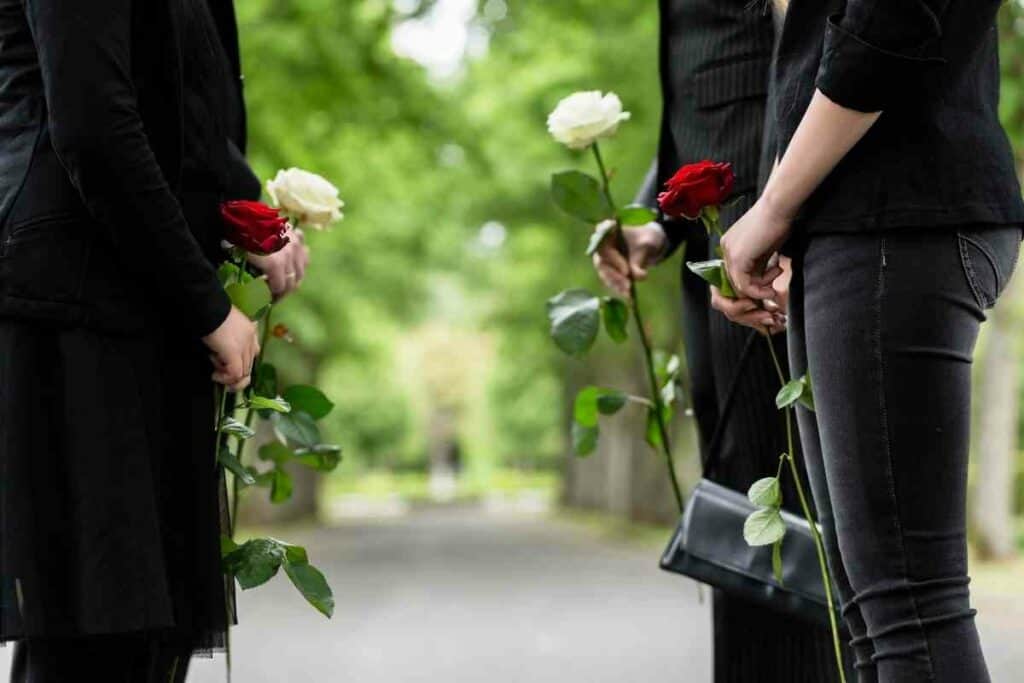
You also want to avoid anything that would be considered revealing or tight-fitting. The goal is to look dignified and respectful.
Clothes
For men, the best option is a black suit with a black tie.
If you do not own a suit, you can wear black dress pants with a black shirt.
Women should wear:
- a black dress
- suit
- or a black kimono
Whatever you choose, the neckline must be modest, and the length of a dress or skirt must be below the knee.
Accessories
When it comes to accessories, keep it simple.
If you wear jewelry, stick to small pieces that are not too flashy. For both men and women, a conservative watch is fine.
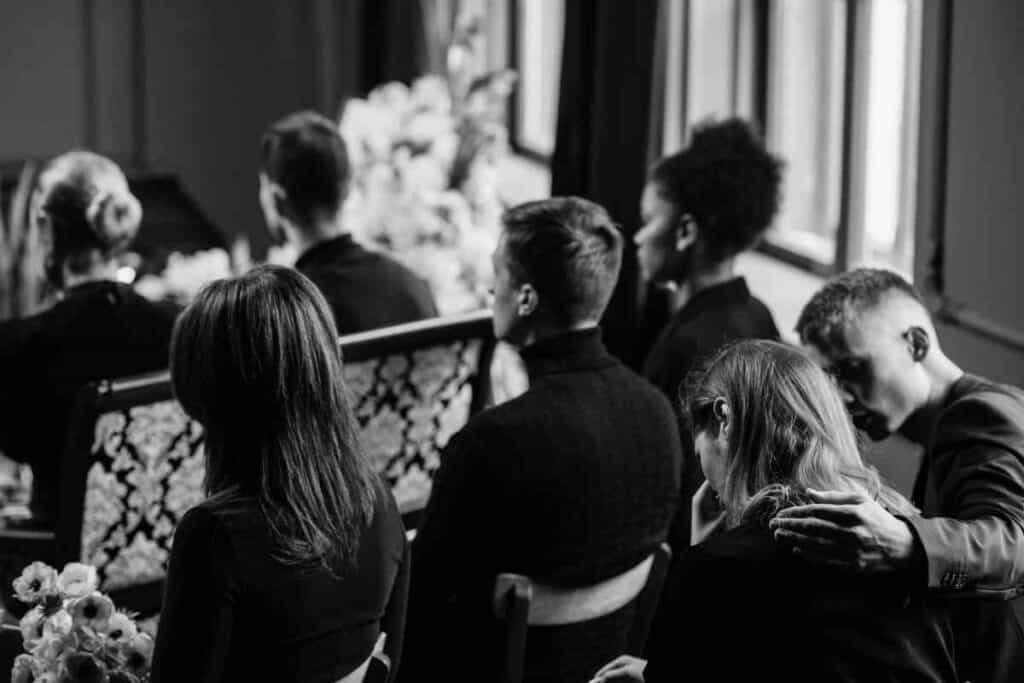
The best jewelry to wear is a single-strand pearl necklace or pearl earrings. Pearls are rich in symbolism in Japan, as they represent purity.
If you must bring a purse to hold your keys or wallet, make sure it is black, a modest size, and doesn’t have any embellishments.
Shoes
All shoes worn by men, women, and children should be flat, black, and close-toed.
No sandals, high heels, or shiny leather shoes are allowed.
Make-up and Manicures
Just like everything else you are wearing, your make-up and manicures should be simple, and understated, and only neutral colors should be used.
Deaths don’t plan around your schedule, so you may be caught off guard with a funeral after getting a bright-colored manicure done.
If this is the case, and you can’t change the color or have the manicure removed, the next best thing to do is wear a pair of plain black gloves.
Color Matters
The color black is associated with death and grieving in many cultures, and Japanese funerals are no different.
Black clothing used to be the only acceptable color to wear to a Japanese funeral, and depending on how traditional the family is, it might still be the only respectful color to wear.
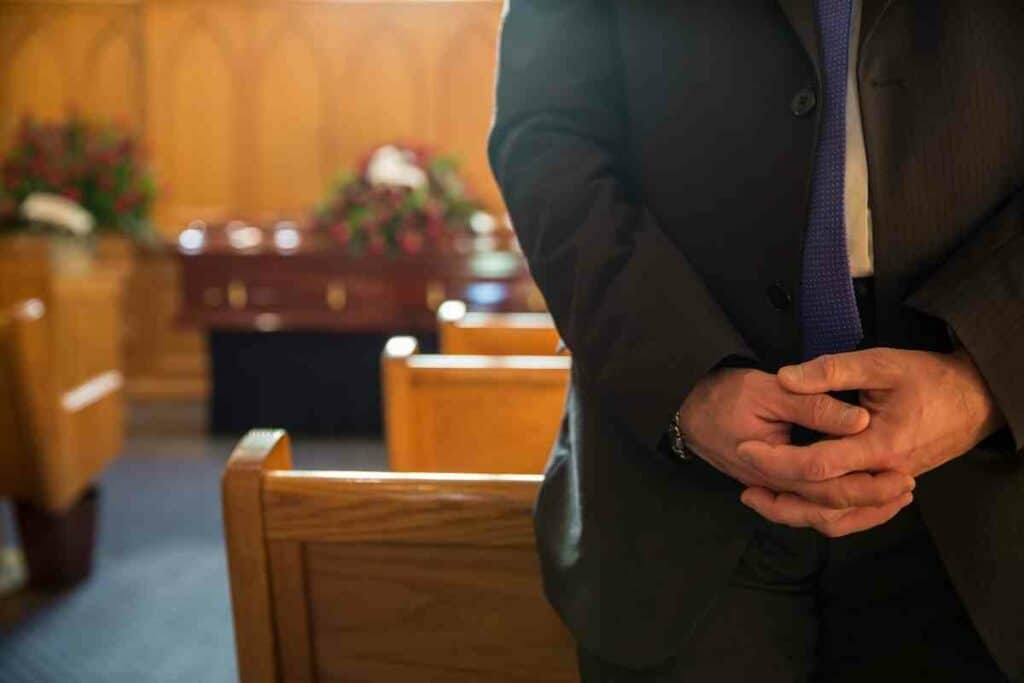
If you don’t have any appropriate black clothing in your closet, you have a couple of options.
The first and best option is to purchase an outfit to keep for Japanese funerals.
Black pants and a black shirt are great staples for a funeral, but you can also wear them with your regular wardrobe.
The second option is to wear a different color.
Dark blues, greys, or browns can be acceptable if you don’t have the time or money to buy a new outfit.
Just remember to keep the colors dark and dull, don’t put on anything flashy, and you are ready to pay your respects.
Showing Respect at Japanese Funerals
If you have been invited to attend a Japanese funeral, it is important to be respectful of the customs and traditions associated with this type of event.
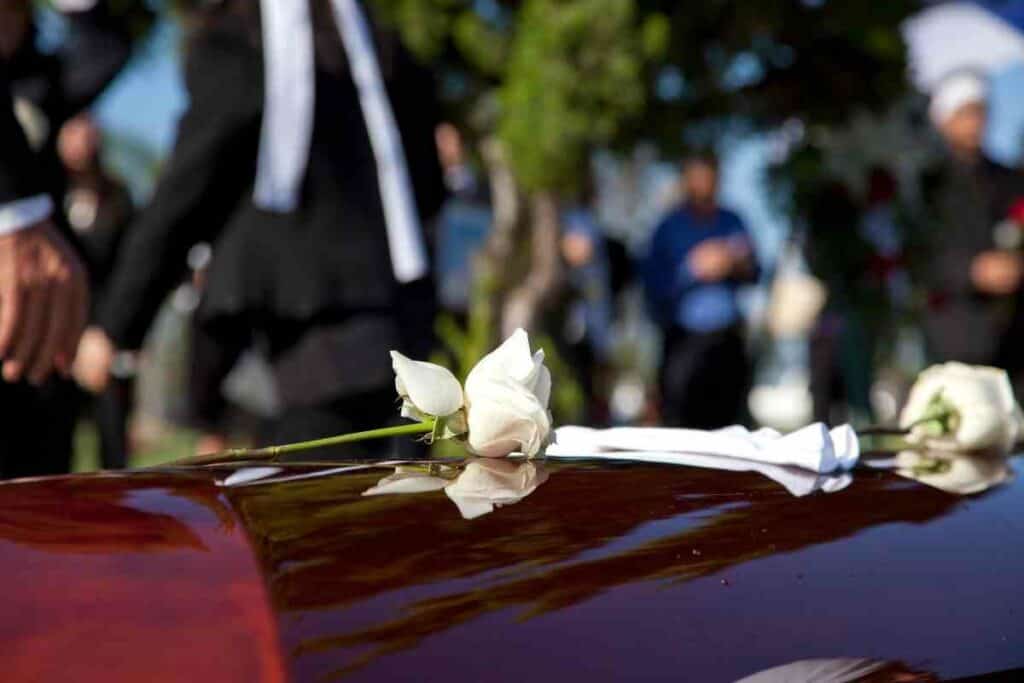
How you dress is one of the biggest ways to show your respect, but there are other things you should know.
Where to Sit During the Ceremony
Those who are not close family members or friends of the deceased should sit at the back of the room during the funeral ceremony.
It is also considered to be respectful to sit quietly and refrain from talking during the ceremony.
What to Bring
It is common courtesy to give a gift of koden, or condolence money, to the family to help with the costs of the funeral.
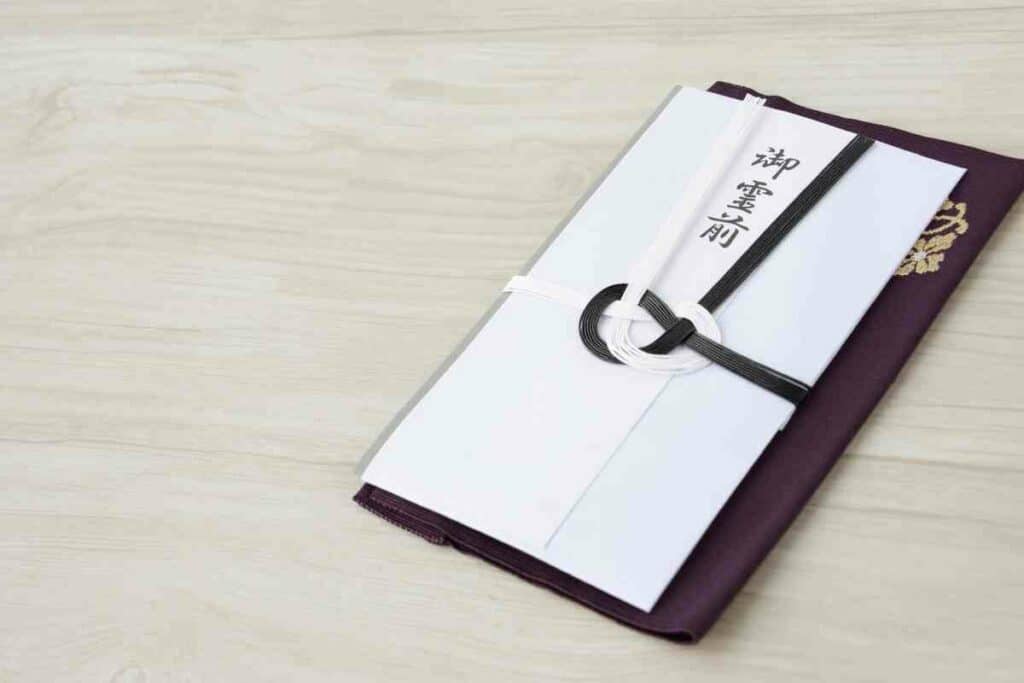
How much you give depends on your financial situation and how close you were to the departed.
On Average – Guests will give $35-$350 or ¥5,000-¥50,000 depending on their financial situation and how close they were with the deceased.
The money is placed in a traditional koden card which is white and tied together with black and white strings.
Then the koden should be wrapped in a dark-colored cloth to protect the envelope from getting dirty on the way to the funeral.
If the fuhou that was sent out tells you that this will be a Buddhist funeral, you should also bring juzu, which are Buddhist rosary beads that are tied together in a circle.
These beads should be worn on your left hand unless you are offering incense or bowing.
Then the beads should be worn around the four fingers on your left hand, leaving your thumb out of the loop.
If you don’t own juzu, the funeral hall may have some available to borrow for the service.
Keep in mind that these beads shouldn’t be played with, and they should never be put on the floor, or you are taking back your offering to the deceased, which could prevent their spirit from becoming a Buddha.
After the Ceremony
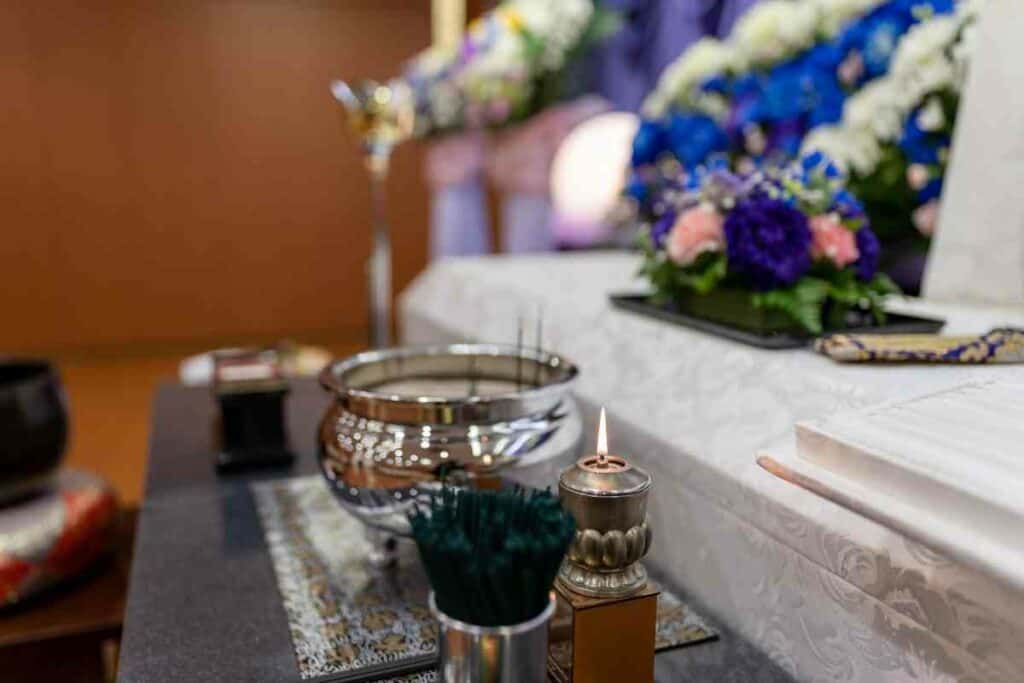
After the funeral ceremony has ended, it is customary for guests to line up and shake hands with the immediate family members of the deceased.
It is considered to be respectful to bow slightly when shaking hands.
Guests should also avoid congratulating the family members on a job well done in hosting the funeral.
Final Thoughts
Dressing for a funeral can be tricky no matter where you come from, but following these simple guidelines will help ensure that you look respectful and appropriate at a Japanese funeral.
And while funeral attire might not be the most comfortable thing you’ve ever worn, remember that you’ll only be wearing it for a little while—and that showing respect for the deceased and their loved ones is always worth a little bit of discomfort.
- 12 Things Tourists Should NEVER Say in Japan
- Kissing Robot: Exploring the Popularity of the Chinese Kissing App
- Unlocking the Secret Dating Rituals Only Locals Know in Japan
- Samurai Armor: Ancient Protection for Japan’s Elite Warriors
- 10 Amazing Facts About Schools in Japan: Unique Traditions and Educational Practices
- Where can you see snow monkeys in Japan: Best locations and viewing tips




